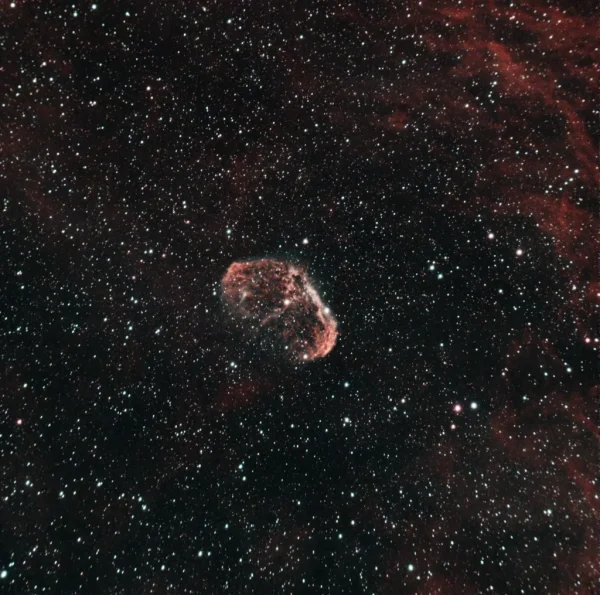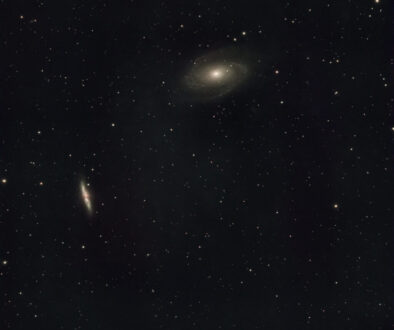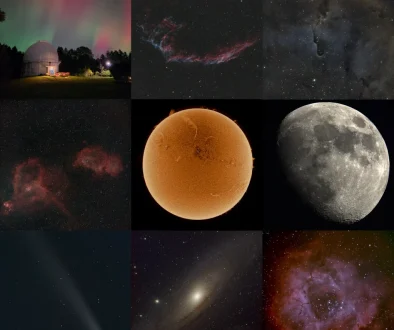The Crescent Nebula in Cygnus
Less than 1 minute
Minutes
I imaged the Crescent Nebula, a beautiful emission nebula in the constellation Cygnus.
From Wikipedia: The Crescent Nebula (also known as NGC 6888, Caldwell 27, Sharpless 105) is an emission nebula in the constellation Cygnus, about 5000 light-years away from Earth, which was discovered by William Herschel in 1792. It is formed by the fast stellar wind from the Wolf-Rayet star WR 136 (HD 192163) colliding with and energizing the slower moving wind ejected by the star when it became a red giant around 250,000 to 400,000 years ago. The result of the collision is a shell and two shock waves, one moving outward and one moving inward. The inward moving shock wave heats the stellar wind to X-ray-emitting temperatures.
The weather was good (although some high clouds were disturbing the acquisition of the images) and the guiding was acceptable. Considering that I was able to collect a total of only 1 hour data (which I processed with PixInsight), I am quite satisfied with the result.
Date: 2022-06-22
Location: Richmond Hill (ON)
Scope: Explore Scientific 80ED CF APO refractor
Mount: Celestron AVX
Camera: ZWO ASI533MC PRO (cooled at -10°C)
Location: Richmond Hill (ON)
Scope: Explore Scientific 80ED CF APO refractor
Mount: Celestron AVX
Camera: ZWO ASI533MC PRO (cooled at -10°C)
Focuser: ZWO EAF
Filter: Optolong L-Extreme
Guide Scope: Orion 50mm mini + ZWO ASI224MC + PHD2
Software: NINA, PixInsight, GIMP
Guide Scope: Orion 50mm mini + ZWO ASI224MC + PHD2
Software: NINA, PixInsight, GIMP
Total integration time: 60 minutes (20x180sec.), dark, flat, bias



